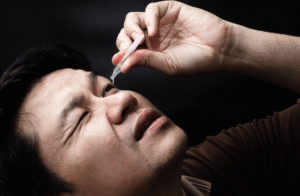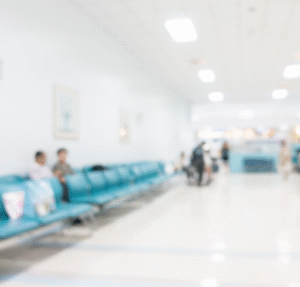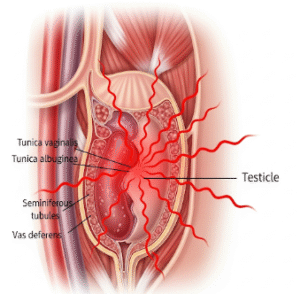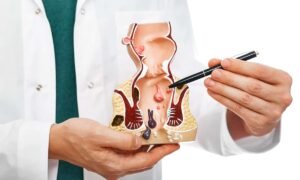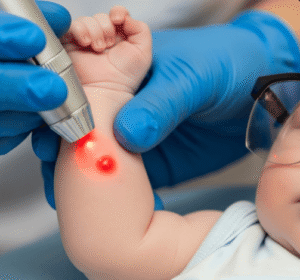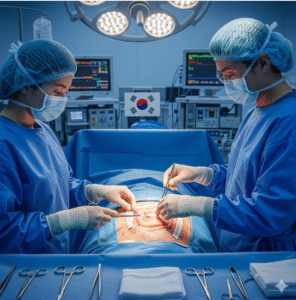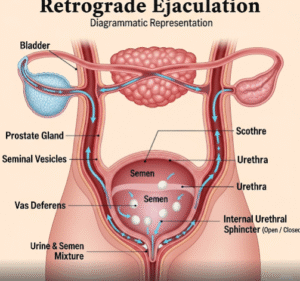What It Is
Eyebag removal, also called lower eyelid surgery (lower blepharoplasty), is a cosmetic procedure that reduces or eliminates puffy bags under the eyes caused by fat protrusion, skin laxity, or aging. Eyebags often make a person look tired, older, or stressed, even when well-rested.
In Korea, eyebag removal is performed with advanced microsurgical and scar-minimizing techniques, often customized to each patient’s anatomy to achieve a youthful, refreshed, and natural appearance.
Why It’s Done
Patients undergo eyebag removal because:
- Eyebags make them appear tired, aged, or unwell.
- They want a brighter, rejuvenated eye appearance.
- Excess skin and fat under the eyes cause heaviness.
- In severe cases, eyebags can affect eyelid function or vision.
Good candidates include:
- Men and women with visible under-eye bags.
- Individuals with good general health and realistic expectations.
- Patients who want a long-lasting solution compared to non-surgical treatments.
Alternatives
- Dermal fillers: Can camouflage mild eyebags by filling tear trough hollows.
- Fat grafting: Restores smoothness under the eyes.
- Laser skin tightening or RF microneedling: Improves mild skin laxity.
- Topical treatments: Reduce puffiness temporarily but do not address structural fat.
Preparation
Before eyebag removal in Korea, patients will:
- Undergo eyelid and skin evaluation.
- Stop smoking and alcohol 2–4 weeks before surgery.
- Avoid blood-thinning medications and supplements.
- Plan for downtime, as swelling and bruising are expected.
How It’s Done
- Anesthesia: Local anesthesia with sedation or general anesthesia.
- Incision types:
- Transconjunctival approach: Incision inside the lower eyelid, no visible scar, suitable for patients with fat but minimal excess skin.
- Subciliary approach (skin incision below lash line): Allows fat removal and excess skin tightening.
- Fat management: Fat may be removed, repositioned, or redistributed to smooth contours.
- Skin tightening: Loose skin may be trimmed if needed.
- Duration: 1–2 hours, outpatient.
Recovery
- First week: Swelling, bruising, and mild discomfort; cold compresses help reduce puffiness.
- Stitches: Removed in 5–7 days (for skin incision).
- Return to activities: Light work in 7–10 days; strenuous activity avoided for 3–4 weeks.
- Final results: Eyes appear more youthful and refreshed within 1–2 months.
Possible Complications
- Bruising or prolonged swelling.
- Dry eyes or irritation (temporary).
- Asymmetry or contour irregularities.
- Ectropion (rare eyelid malposition, correctable).
- Rare risks: infection, bleeding, or visible scarring.
Treatment Options in Korea
Diagnosis
Korean surgeons use eyelid analysis, digital photography, and sometimes 3D imaging to determine whether fat removal, repositioning, or skin tightening is best.
Medical Treatments
- Dermal fillers or fat grafting for mild under-eye hollows.
- Laser skin tightening for early signs of laxity.
Surgical or Advanced Therapies
- Transconjunctival eyebag removal for no visible scar.
- Subciliary eyebag removal with skin tightening for advanced cases.
- Fat repositioning or grafting for smoother under-eye contour.
- Combination with upper blepharoplasty or ptosis correction if needed.
Rehabilitation and Support
- Cold compresses and eye ointments during recovery.
- Scar management (minimal with advanced Korean techniques).
- Follow-up visits to ensure healing and symmetry.
- International patients benefit from Korea’s world-class eyelid surgeons, natural results approach, and advanced scar-minimizing methods.




